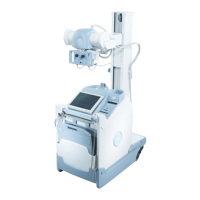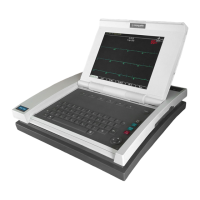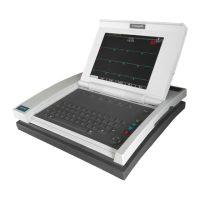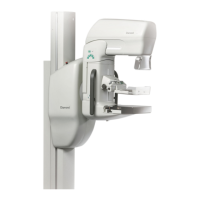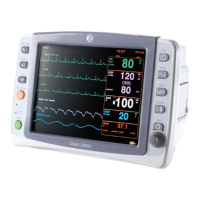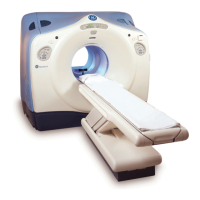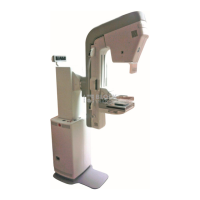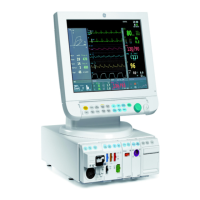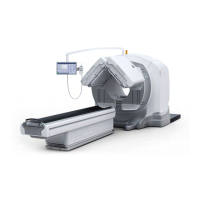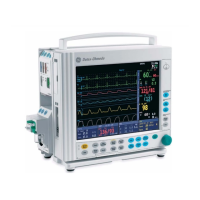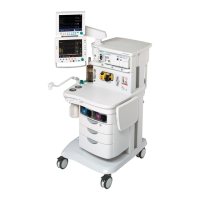Chapter 8: Image Viewer
Definium 5000 X-Ray System 5197809-1EN Rev. 4 (13 February 2008) 8-20
Operator Manual © 2008 General Electric Company. All rights reserved.
Corrective Actions
Do the following if both the DEI value is outside of the acceptable range and the image quality is poor:
• Low DEI - increase the mAs and kV values. Increase mAs by increments of 2 Renard steps and check
that kVp range is anatomically appropriate.
• High DEI - decrease the mAs and kV values. Decrease mAs by increments of 2 Renard steps and
check that kVp range is anatomically appropriate.
NOTE: A 2-Renard step adjustment is equivalent to a 25% change. The amount of change will depend on
how high or low the DEI reading is. If the DEI is twice the recommended range, then the initial
adjustment should be to cut the mAs in half in order to create a noticeable change in the mAs
delivered to the detector and thus change in the DEI readout in subsequent exposures.
If DEI is within the acceptable range but the image quality is still poor, the image may need adjustment
through looks customization. Refer to Re-process Images
(p. 8-17) to correct individual images or
Chapter 10:
Set Preferences-Image Processing (p. 10-32) to change the default processing for exams and
views.
NOTE: Call for service if the system continues to show low or high DEI. Recurring DEI errors may indicate
that the system needs calibration or repair.
Exceptions to Corrective Actions
The following conditions may achieve a properly exposed image but still result in a low DEI. These should
be treated as special cases and the standard retake and corrective action rules may not apply.
• The presence of external patient shielding (i.e., lead apron) in the field of view can result in an
unexpectedly low DEI (and UDExp/CDExp). The presence of shielding can be easily confirmed by
viewing the image.
• The incorrect determination of the FOV by the system can result in an unexpectedly low DEI (and
UDExp/CDExp). The presence of significant collimation regions in the final image can be easily
confirmed by viewing the image. Correcting the FOV using the Manual Shutter feature does NOT
correct the DEI value.
NOTE: User must select the appropriate FOV for the anatomy imaged, and use proper collimation at all
times.
FOR TRAINING PURPOSES ONLY!
NOTE: Once downloaded, this document is UNCONTROLLED, and therefore may not be the latest revision. Always confirm revision status against a validated source (ie CDL).

